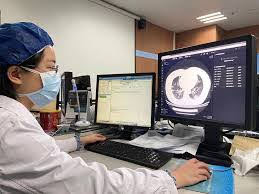Rodney Brooks (1954–) is a business and policy adviser, as well as a computer science researcher.
He is a recognized expert in the fields of computer vision,
artificial intelligence, robotics, and artificial life.
Brooks is well-known for his work in artificial intelligence
and behavior-based robotics.
His iRobot Roomba autonomous robotic vacuum cleaners are
among the most widely used home robots in America.
Brooks is well-known for his support for a bottom-up
approach to computer science and robotics, which he discovered while on a
lengthy, continuous visit to his wife's relatives in Thailand.
Brooks claims that situatedness, embodiment, and perception
are just as crucial as cognition in describing the dynamic actions of
intelligent beings.
This method is currently known as behavior-based artificial
intelligence or action-based robotics.
Brooks' approach to intelligence, which avoids explicitly
planned reasoning, contrasts with the symbolic reasoning and representation
method that dominated artificial intelligence research over the first few
decades.
Much of the early advances in robotics and artificial
intelligence, according to Brooks, was based on the formal framework and
logical operators of Alan Turing and John von Neumann's universal computer
architecture.
He argued that these artificial systems had become far far
from the biological systems that they were supposed to reflect.
Low-speed, massively parallel processing and adaptive
interaction with their surroundings were essential for living creatures.
These were not, in his opinion, elements of traditional
computer design, but rather components of what Brooks coined the term
"subsumption architecture" in the mid-1980s.
According to Brooks, behavior-based robots are placed in
real-world contexts and learn effective behaviors from them.
They need to be embodied in order to be able to interact
with the environment and get instant feedback from their sensory inputs.
Specific conditions, signal changes, and real-time physical
interactions are usually the source of intelligence.
Intelligence may be difficult to define functionally since
it comes through a variety of direct and indirect interactions between
different robot components and the environment.
As a professor at the Massachusetts Institute of Technology's
Artificial Intelligence Laboratory, Brooks developed numerous notable mobile
robots based on the subsumption architecture.
Allen, the first of these behavior-based robots, was
outfitted with sonar range and motion sensors.
Three tiers of control were present on the robot.
Its capacity to avoid static and dynamic impediments was
given to it by the first rudimentary layer.
The second implanted a random walk algorithm that gave the
robot the ability to shift course on occasion.
The third behavioral layer kept an eye on faraway locations
that may be objectives while the other two control levels were turned off.
Another robot, Herbert, used a dispersed array of 8-bit
microprocessors and 30 infrared proximity sensors to avoid obstructions,
navigate low walls, and gather empty drink cans scattered across several
workplaces.
Genghis was a six-legged robot that could walk across rugged
terrain and had four onboard microprocessors, 22 sensors, and 12 servo motors.
Genghis was able to stand, balance, and maintain itself, as
well as climb stairs and follow humans.
Brooks started thinking scenarios in which behavior-based
robots may assist in the exploration of the surface of other planets with the
support of Anita Flynn, an MIT Mobile Robotics Group research scientist.
The two roboticists argued in their 1989 essay "Fast,
Cheap, and Out of Control," published by the British Interplanetary
Society, that space organizations like the Jet Propulsion Laboratory should
reconsider plans for expensive, large, and slow-moving mission rovers and
instead consider using larger sets of small mission rovers to save money and
avoid risk.
Brooks and Flynn came to the conclusion that their
autonomous robot technology could be constructed and tested swiftly by space
agencies, and that it could serve dependably on other planets even when it was
out of human control.
When the Sojourner rover arrived on Mars in 1997, it had
some behavior-based autonomous robot capabilities, despite its size and unique
design.
Brooks and a new Humanoid Robotics Group at the MIT
Artificial Intelligence Laboratory started working on Cog, a humanoid robot, in
the 1990s.
The term "cog" had two meanings: it referred to
the teeth on gears as well as the word "cognitive." Cog had a number
of objectives, many of which were aimed at encouraging social communication
between the robot and a human.
Cog had a human-like visage and a lot of motor mobility in
his head, trunk, arms, and legs when he was created.
Cog was equipped with sensors that allowed him to see, hear,
touch, and speak.
Cynthia Breazeal, the group researcher who designed Cog's
mechanics and control system, used the lessons learned from human interaction
with the robot to create Kismet, a new robot in the lab.
Kismet is an affective robot that is capable of recognizing,
interpreting, and replicating human emotions.
The meeting of Cog and Kis is a watershed moment in the
history of artificial emotional intelligence.
Rodney Brooks, cofounder and chief technology officer of
iRobot Corporation, has sought commercial and military applications of his
robotics research in recent decades.
PackBot, a robot commonly used to detect and defuse
improvised explosive devices in Iraq and Afghanistan, was developed with a
grant from the Defense Advanced Research Projects Agency (DARPA) in 1998.
PackBot was also used to examine the damage to the Fukushima
Daiichi nuclear power facility in Japan after the terrorist attacks of
September 11, 2001, and at the site of the World Trade Center after the
terrorist attacks on September 11, 2001.
Brooks and others at iRobot created a toy robot that was
sold by Hasbro in 2000.
My Real Baby, the end product, is a realistic doll that can
cry, fuss, sleep, laughing, and showing hunger.
The Roomba cleaning robot was created by the iRobot
Corporation.
Roomba is a disc-shaped vacuum cleaner featuring roller
wheels, brushes, filters, and a squeegee vacuum that was released in 2002.
The Roomba, like other Brooks behavior-based robots, uses
sensors to detect obstacles and avoid dangers such as falling down stairs.
For self-charging and room mapping, newer versions use
infrared beams and photocell sensors.
By 2019, iRobot has sold over 25 million robots throughout
the globe.
Brooks is also Rethink Robotics' cofounder and chief
technology officer.
Heartland Robotics, which was formed in 2008 as Heartland
Robotics, creates low-cost industrial robots.
Baxter, Rethink's first robot, can do basic repetitive
activities including loading, unloading, assembling, and sorting.
Baxter poses in front of a computer screen with an animated
human face created on it.
Bax vehicle has sensors and cameras integrated in it that
allow it identify and prevent crashes when people are around, which is a
critical safety feature.
Baxter may be utilized in normal industrial settings without
the need for a security cage.
Unskilled personnel may rapidly train the robot by simply
moving its arms around in the desired direction to control its actions.
Baxter remembers these gestures and adjusts them to other
jobs.
The controls on its arms may be used to make fine motions.
Sawyer is a smaller version of Rethink's Baxter
collaborative robot, which is advertised for accomplishing risky or boring
industrial jobs in restricted places.
Brooks has often said that science are still unable to solve
the difficult challenges of consciousness.
He claims that artificial intelligence and artificial life
researchers have overlooked an essential aspect of living systems that
maintains the gap between nonliving and living worlds wide.
Even if all of our world's live aspects are made out of
nonliving atoms, this remains true.
Brooks speculates that some of the AI and ALife researchers'
parameters are incorrect, or that current models are too simple.
It's also possible that researchers are still lacking in raw
computing power.
However, Brooks thinks that there may be something about
biological life and subjective experience—an component or a property—that is
now undetectable or concealed from scientific perspective.
Brooks attended Flinders University in Adelaide, South
Australia, to study pure mathematics.
At Stanford University, he earned his PhD under the
supervision of John McCarthy, an American computer scientist and cognitive
scientist.
Model-Based Computer Vision was the title of his
dissertation thesis, which he extended and published (1984).
From 1997 until 2007, he was the Director of the MIT
Artificial Intelligence Laboratory (CSAIL), which was renamed Computer Science
& Artificial Intelligence Laboratory (CSAIL) in 2003.
Brooks has received various distinctions and prizes for his
contributions to artificial intelligence and robotics.
He is a member of both the American Academy of Arts and
Sciences and the Association for Computing Machinery.
Brooks has won the IEEE Robotics and Automation Award as
well as the Joseph F. Engelberger Robotics Award for Leadership.
He is now the vice chairman of the Toyota Research
Institute's advisory board.
~ Jai Krishna Ponnappan
You may also want to read more about Artificial Intelligence here.
















